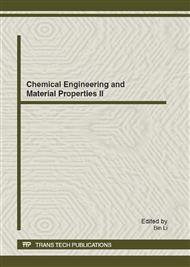p.741
p.745
p.749
p.753
p.757
p.762
p.766
p.770
p.774
Influences of Hydrogenation on Tensile Properties of Ti40 Alloy
Abstract:
The influence of hydrogenation on microstructure and tensile properties of Ti40 alloy has been investigated. The microstructure observation reveals that a new phase called η phase with FCC structure appears at the grainboundaries when the hydrogen content above 0.3 wt.%. With increasing hydrogen contents, the strength first increases and then decreases, and the ductility decreases as the specimens tensioned at both room temperature and 700oC. These phenomenons are resulted from the solution strengthening of hydrogen addition in Ti40 alloy with single β phase. As the hydrogen content increases, the fracture mode changes from dimple to cleavage fracture for specimens tensioned at room temperature. When tested at 700oC, the morphology of fracture surfaces in the specimens are all characterized by polygonal grains and the fractograph exhibits typically “sugar candy” brittle fracture for the specimen with 0.5wt% H.
Info:
Periodical:
Pages:
757-761
Citation:
Online since:
July 2012
Price:
Сopyright:
© 2012 Trans Tech Publications Ltd. All Rights Reserved
Share:
Citation:


